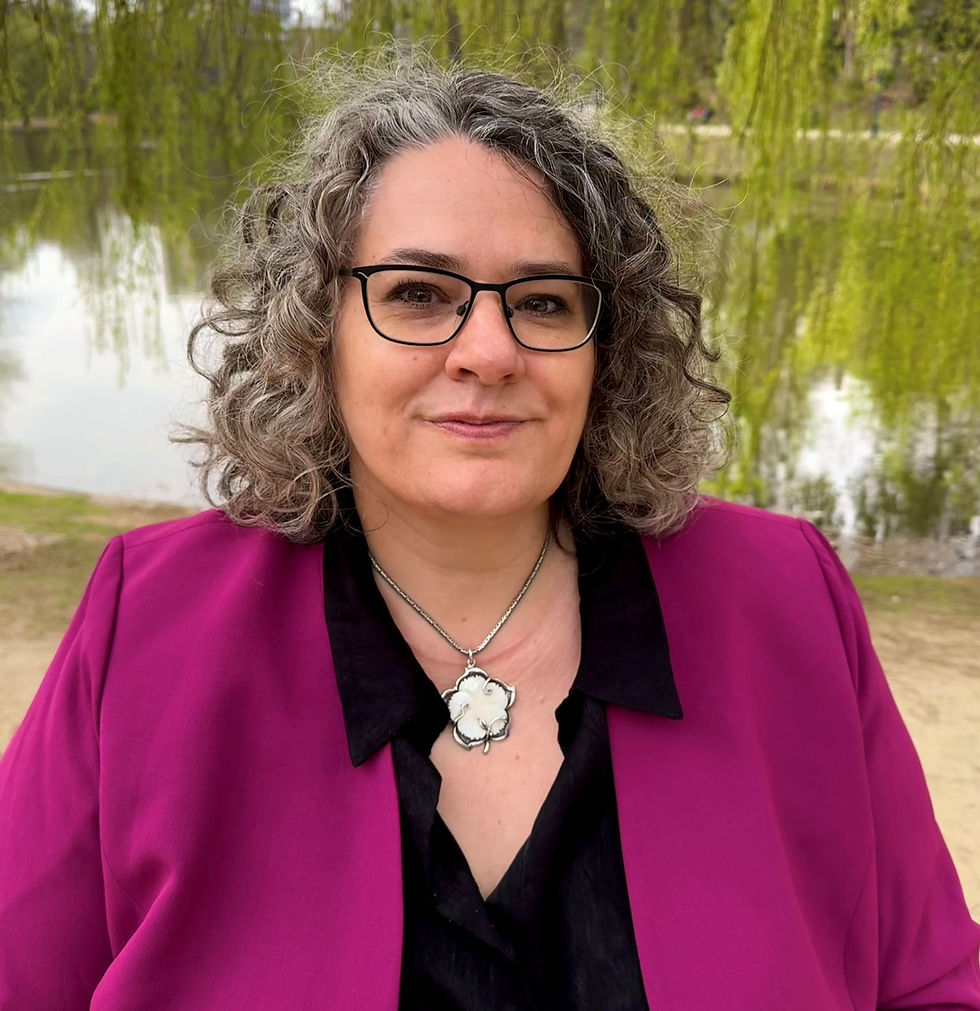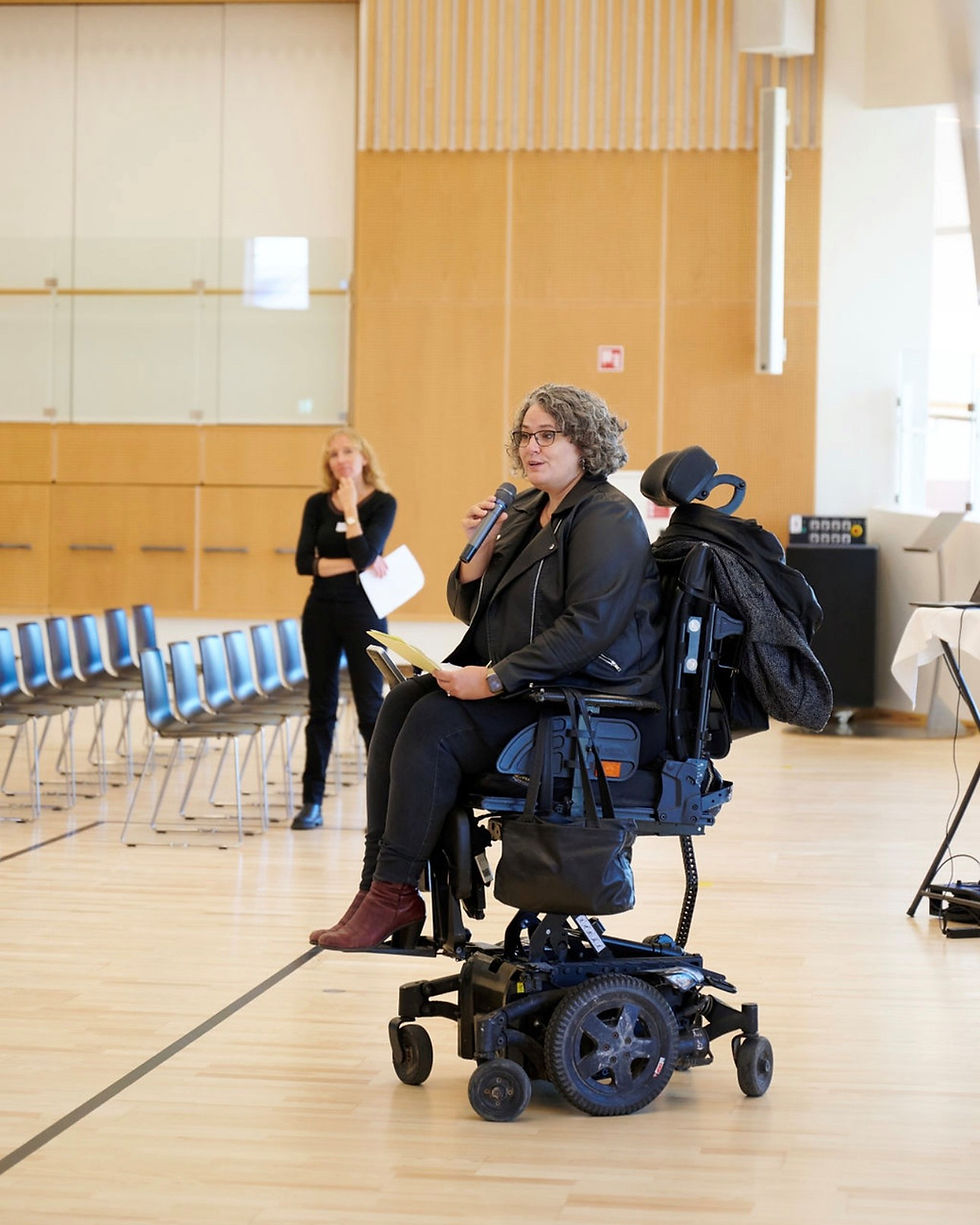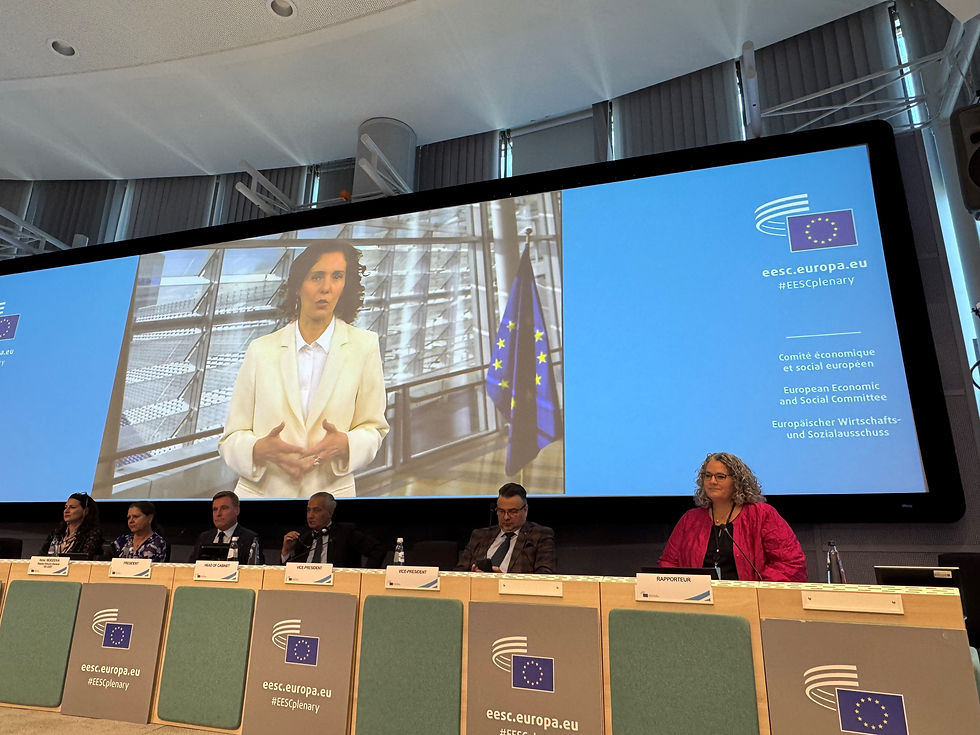Beyond ramps and rights
- The International
- Aug 8
- 4 min read

How culture shapes our view of disability.
Text: Anna Pawlowicz Pics: Sif Holst
Disability is often seen as a matter of access, of whether someone can access the train or workplace. But as Sif Holst reminds us, the real barriers are often cultural.
Sif Holst, vice president of Disabled People’s Organisations Denmark (DH), has spent over 25 years advocating for the rights of disabled people in Denmark and internationally. A wheelchair user and activist with lived experience of multiple chronic conditions, Sif has an acute understanding of how different societies perceive and engage with disability - and how those perceptions shape everything from daily life to policy.
“We often talk about the social model of disability,” she explains, “which says that disability doesn’t just come from a diagnosis or condition, but from the environment and attitudes that fail to accommodate difference.” Denmark, she notes, formally adheres to this model. But the reality is more complex.
“In Denmark, we have a strong culture of individual responsibility,” Sif says. “Even when someone lives with a significant disability, there’s a tendency to say: ‘Can’t you try harder? Be less of a burden?” That mindset, she argues, reflects a quiet undercurrent: that needing help is shameful, and independence is the only acceptable goal.
This approach has concrete consequences. For example, someone shopping midday, while disabled and receiving benefits, might be shamed for “misusing” the welfare system. “There’s this idea that if you’re out during working hours, you must be gaming the system,” Sif explains. “It’s deeply stigmatising.”
"Part of Sif’s vision is also about representation - bringing disabled voices into culture, media, and education. “In other countries, disability is more visible in public life: in universities, on stage, in literature. We need that in Denmark."

Systemic gaps and everyday interactions
The Danish welfare model, while generous in theory, can also reinforce silos. Disability issues are seen as belonging to the “social sector,” which creates a perception that only certain departments or experts need to engage. “We have ‘sector responsibility’ in Denmark, which means every part of society should ensure accessibility and inclusion,” Sif points out. “But in practice, education departments or employers might say, ‘That’s not our issue - it’s a job for social services.”
This contrasts sharply with attitudes in other parts of the world. In Southern and Eastern Europe, for instance, disability is often seen as a family matter. “There, the whole family might take responsibility,” Sif says. “It can mean more practical support, but also a lack of formal systems and a heavier burden on caregivers.”
Interestingly, countries that embed disabled people more visibly in everyday life tend to have more inclusive attitudes. Sif cites the example of the U.S., where deinstitutionalisation policies led to more disabled people living in their local communities. “If you go to school with a classmate who uses a wheelchair or has a learning difference, you grow up seeing that as normal. That kind of exposure changes everything.”
And yet, as Sif describes, inclusion is not just about systems - it’s about the smallest social interactions. She recalls a recent moment on the Copenhagen Metro, navigating her wheelchair, fellow passengers pushing past her. “It was a foreign visitor - not a Dane - who stepped in and said, ‘Wait, let the wheelchair user exit first.’ That simple moment of advocacy was powerful.”
In Denmark, she notes, people are often uncertain around disability - not unkind, but hesitant. “There’s a tendency to look away. People often avoid engagement because they’re unsure what to say.”


Reframing inclusion and building bridges
As someone running for president of DH this autumn, Sif hopes to shift those attitudes. Her goals include bringing intersectionality into the national conversation and encouraging Denmark to more actively use the UN Convention on the Rights of Persons with Disabilities. She also wants to see DH act as a convener, creating more collaboration between its members, and building new bridges with society.
“Many countries refer to the Convention to push for change.” She says. “In Denmark, we’ve limited our conversation on disability to the welfare sector, and it’s holding us back.”
Part of Sif’s vision is also about representation - bringing disabled voices into culture, media, and education. “In other countries, disability is more visible in public life: in universities, on stage, in literature. We need that in Denmark.”
She also calls for a more nuanced understanding of identity. “There are differences between men and women with disabilities, between young and old, between visible and invisible disabilities. One-size-fits-all doesn’t work.” For example, women with conditions typically seen as “male” - like haemophilia - often receive inadequate care due to a lack of research. Meanwhile, men with “female” conditions such as fibromyalgia may face stigma and misdiagnosis.
And the intersectional lens doesn’t stop at gender. Ethnicity, socioeconomic status, and age also shape how disability is experienced. “Right now, we treat all disabled people as one homogeneous group,” Sif says. “But real inclusion means understanding those internal differences too.”
Despite the challenges, Sif remains hopeful. “The solutions aren’t always big. Sometimes it’s as simple as being curious, being willing to help, or asking how you can be an ally.” She encourages readers to get involved, whether through a disability organisation or simply by making sure the groups they’re already part of - be it environmental, feminist, or local - are inclusive of disabled voices.
“Change doesn’t happen in isolation,” she says. “It’s about connection - across communities, across countries, and experiences.”









